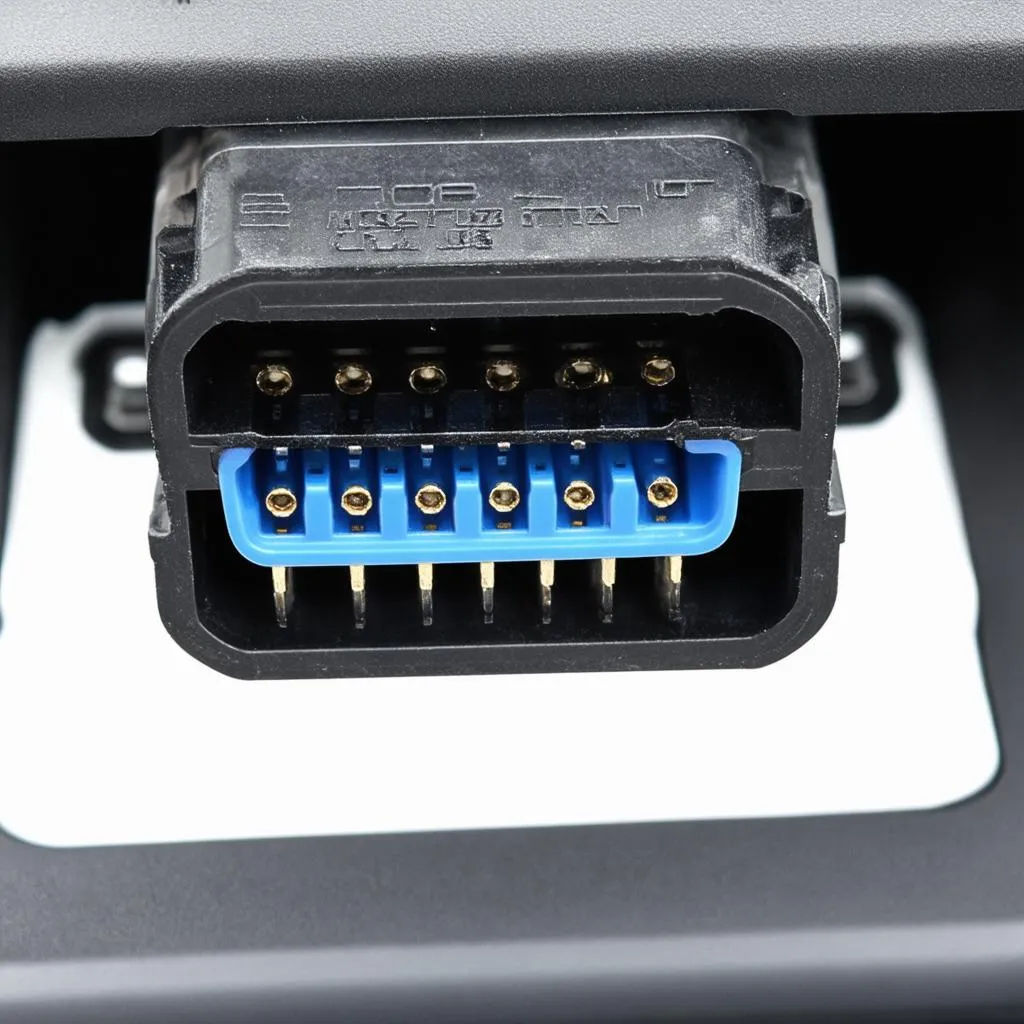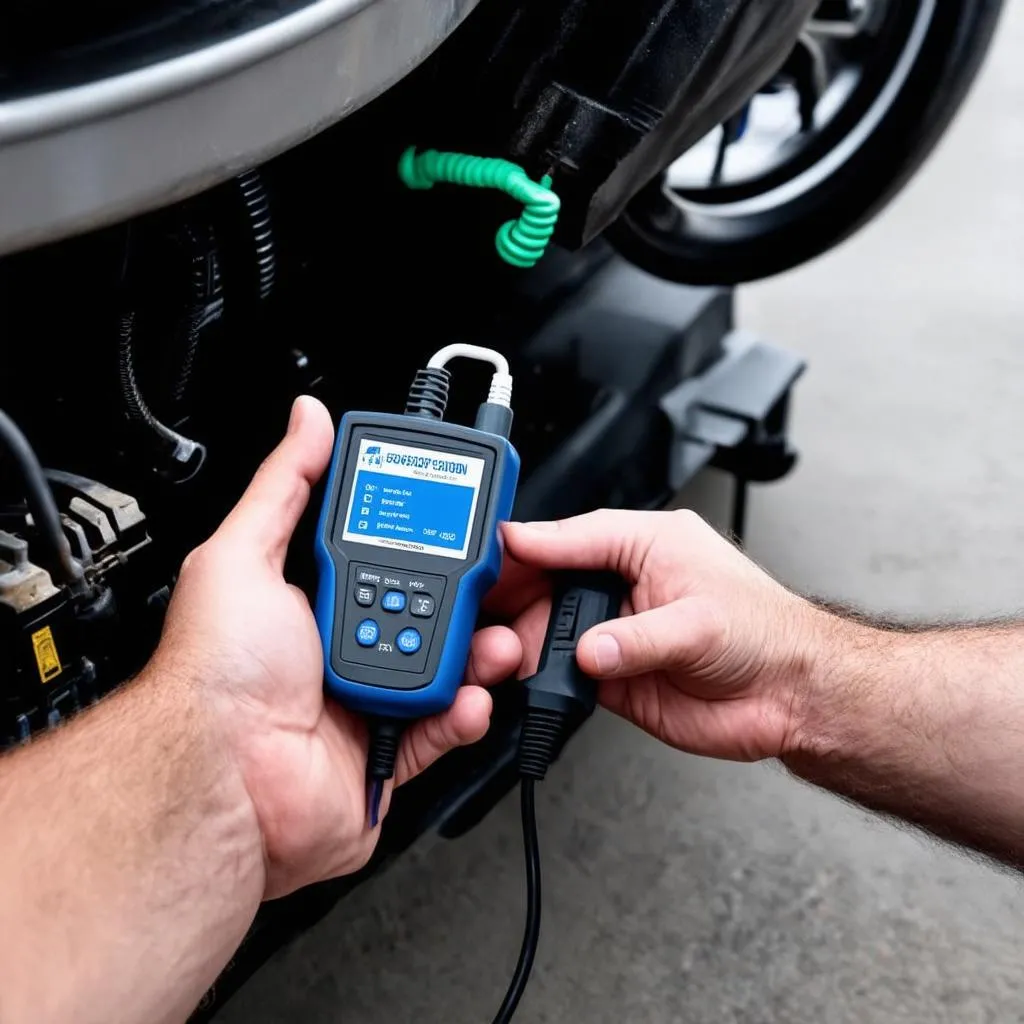Have you ever been driving, and suddenly your check engine light comes on? It can be a real heart-stopper, right? Well, that little light is your car’s way of telling you something’s off, and it communicates that through the OBD2 data link connector. Think of it as the language your car uses to speak to mechanics and diagnostic tools. Today, we’re going to break down the mystery of the “connector view of an OBD2 data link connector,” so you can understand what you’re looking at under the hood.
The Significance of the Connector View
You see, the OBD2 (On-Board Diagnostics 2) system is like your car’s central nervous system. The connector view of your OBD2 data link connector, usually located under your steering wheel, provides a window into this system. It’s a standardized 16-pin connector, but understanding what each pin does and how they work together is where the real magic happens.
Why Should You Care About the OBD2 Connector View?
You might be thinking, “That’s mechanic stuff; why should I care?” Well, understanding your car’s connector view can be surprisingly empowering.
- Self-Diagnosis: Imagine being able to diagnose minor car troubles yourself without rushing to a mechanic for every hiccup. With a basic understanding of the connector view and a simple OBD2 scanner, you can!
- Cost Savings: Early detection of car problems often translates to cheaper fixes. This knowledge could save you from costly surprises down the line.
- Peace of Mind: There’s a certain calm that comes from understanding how things work, especially when it comes to something as important as your vehicle.
 OBD2 Connector
OBD2 Connector
Breaking Down the Connector View: Pin by Pin
Let’s delve into the nitty-gritty of what each pin on the connector represents:
- Pin 1: Manufacturer Discretionary – Think of this as a “wildcard” pin. Car manufacturers can use it for various functions specific to their models.
- Pin 2: J1850 Bus+ (for specific manufacturers)
- Pin 3: Manufacturer Discretionary
- Pin 4: Chassis Ground – This pin provides a ground connection for the chassis, ensuring electrical stability.
- Pin 5: Signal Ground – Another grounding pin, this one for the signal circuits, ensuring accurate data transmission.
- Pin 6: CAN High (J-2284) – Part of the Controller Area Network (CAN) system, a high-speed communication network within your car.
- Pin 7: ISO 9141-2 K-Line – Used for communication in some vehicles, particularly older European and Asian models.
- Pin 8: Manufacturer Discretionary
- Pin 9: Manufacturer Discretionary
- Pin 10: J1850 Bus- (for specific manufacturers)
- Pin 11: Manufacturer Discretionary
- Pin 12: Manufacturer Discretionary
- Pin 13: Manufacturer Discretionary
- Pin 14: CAN Low (J-2284) – The counterpart to Pin 6, completing the CAN system’s communication loop.
- Pin 15: ISO 9141-2 L-Line – Works in conjunction with Pin 7 for communication in certain car models.
- Pin 16: Battery Voltage – This pin provides power to your OBD2 scanner directly from the car’s battery.
Understanding the Jargon
Terms like “CAN,” “J1850,” and “ISO 9141-2” might sound like a foreign language, but they represent different communication protocols used by cars. Don’t fret if these seem overwhelming; the main takeaway is that different pins handle specific communication tasks within your car’s system.
 Mechanic Using OBD2 Scanner
Mechanic Using OBD2 Scanner
FAQs: Common Questions About the OBD2 Connector View
Here are some questions people often ask about the OBD2 connector view:
- Q: Can I damage my car by fiddling with the OBD2 connector?
- A: While the risk is low, it’s always best to exercise caution. Ensure your car’s ignition is off before connecting or disconnecting anything to avoid potential electrical issues.
- Q: Do all OBD2 scanners work with all cars?
- A: Most modern scanners are compatible with a wide range of vehicles, but it’s crucial to choose one that explicitly supports your car’s make, model, and year.
- Q: What are some basic things I can diagnose with an OBD2 scanner?
- A: You can read and interpret engine codes, monitor fuel efficiency, check emissions readiness, and even reset your check engine light (after addressing the underlying issue, of course).
Beyond the Pins: A Holistic Approach
While understanding the technical aspects of the OBD2 connector view is essential, it’s just one piece of the puzzle when it comes to car maintenance. Regular servicing, being attuned to your car’s sounds and performance, and choosing quality parts are equally important.
Remember, taking care of your car is not just about mechanics and wires; it’s about ensuring your safety, smooth journeys, and peace of mind on the road.
Need Help? We’re Just a Message Away!
Feeling overwhelmed by car diagnostics? Don’t hesitate to reach out to our team of automotive experts via WhatsApp at +84767531508. We’re available 24/7 to assist you with all your diagnostic tool needs, from choosing the right scanner to interpreting those cryptic error codes. Drive with confidence, knowing techcarusa.com has your back!